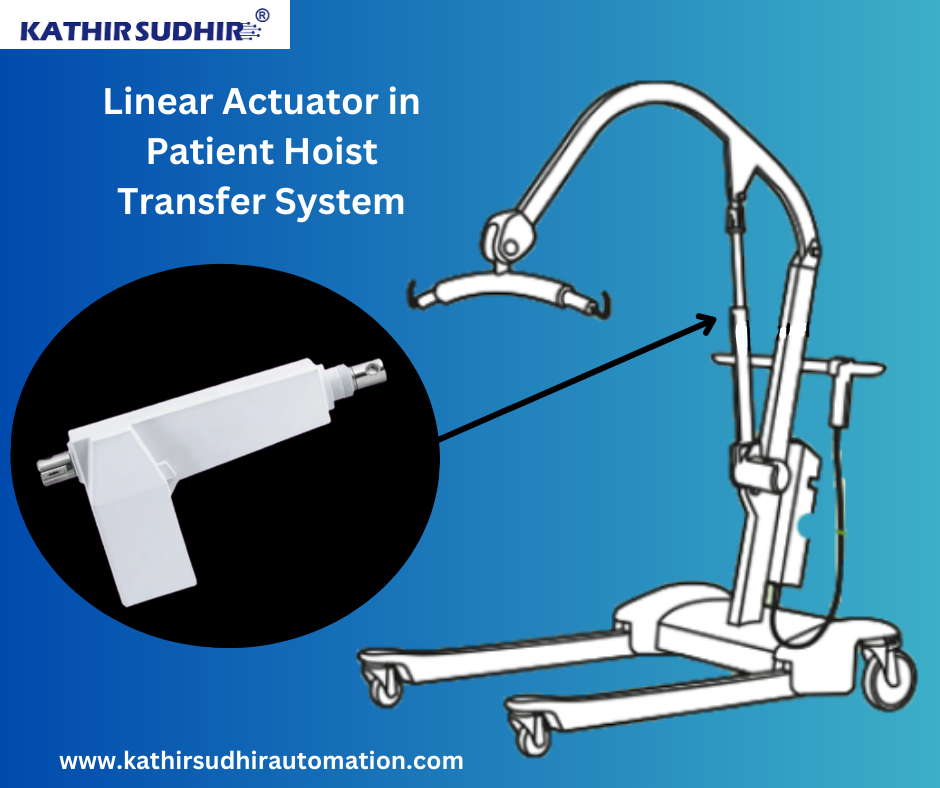Introduction
In the healthcare industry, patient mobility and comfort are paramount considerations. For patients with limited mobility, transfers between different surfaces, such as beds, wheelchairs, and shower chairs, can be challenging and physically demanding. This is where patient hoist transfer systems come into play, providing a safe and efficient solution for caregivers and improving the overall experience for patients. At the heart of these systems lies a crucial component: the linear actuator. In this blog post, we will explore the role of linear actuators in patient hoist transfer systems and delve into their benefits and functionality.
What is a Linear Actuator?
A linear actuator is a device that converts rotational motion into linear motion, generating force and movement in a straight line. It consists of a motor, a gearbox, and a lead screw or belt mechanism, all enclosed within a compact housing. Linear actuators are commonly used in various applications where linear motion is required, such as in robotics, industrial automation, and, in our case, patient hoist transfer systems.
The Role of Linear Actuators in Patient Hoist Transfer Systems
Patient hoist transfer systems are designed to safely lift and move patients between different surfaces, reducing the physical strain on caregivers and minimizing the risk of injury to both patients and staff. Linear actuators play a crucial role in these systems by providing controlled and precise vertical movement.
- Lifting and Lowering: Linear actuators are responsible for the vertical movement of the hoist, enabling smooth lifting and lowering of the patient. The actuator’s motor generates the necessary force, while the gearbox and lead screw or belt mechanism convert the rotational motion into linear motion. This ensures a safe and comfortable transfer for the patient.
- Adjustability: Linear actuators in patient hoist transfer systems often incorporate adjustable features. They allow caregivers to customize the height and positioning of the hoist to suit the patient’s specific needs. Whether it’s adjusting the height to match a bed or wheelchair or positioning the patient for a shower, these actuators provide flexibility and adaptability.
- Control and Safety: Linear actuators are equipped with control systems that ensure precise and reliable movement. They can be operated using buttons or switches, allowing caregivers to initiate and control the transfer process effortlessly. Additionally, many linear actuators include safety features such as overload protection, emergency stop buttons, and collision detection, ensuring the well-being of both the patient and the caregiver.

Benefits of Linear Actuators in Patient Hoist Transfer Systems
The integration of linear actuators in patient hoist transfer systems offers numerous benefits:
- Enhanced Safety: Linear actuators provide controlled and stable lifting and lowering, minimizing the risk of accidents or injuries during transfers. The precise control and safety features of these actuators ensure the well-being of patients and caregivers alike.
- Improved Patient Comfort: By incorporating adjustable features, linear actuators enable caregivers to position patients in the most comfortable and ergonomic manner possible. Patients can be lifted, lowered, and repositioned smoothly, reducing discomfort and enhancing their overall experience.
- Increased Efficiency: Linear actuators simplify the transfer process for caregivers, allowing them to perform transfers more efficiently and with less physical exertion. This, in turn, reduces the strain on healthcare professionals and enables them to focus more on providing quality care to patients.
- Versatility: Patient hoist transfer systems equipped with linear actuators can be used in various healthcare settings, including hospitals, nursing homes, and rehabilitation centers. These systems accommodate patients with diverse needs, ensuring seamless transfers in different environments.
Conclusion
Linear actuators play a pivotal role in patient hoist transfer systems, revolutionizing the way patients with limited mobility are moved and cared for. By providing


Wow, fantastic blog format! How lengthy have you been blogging for?
you made blogging glance easy. The entire glance of your site is wonderful, as smartly as the content!